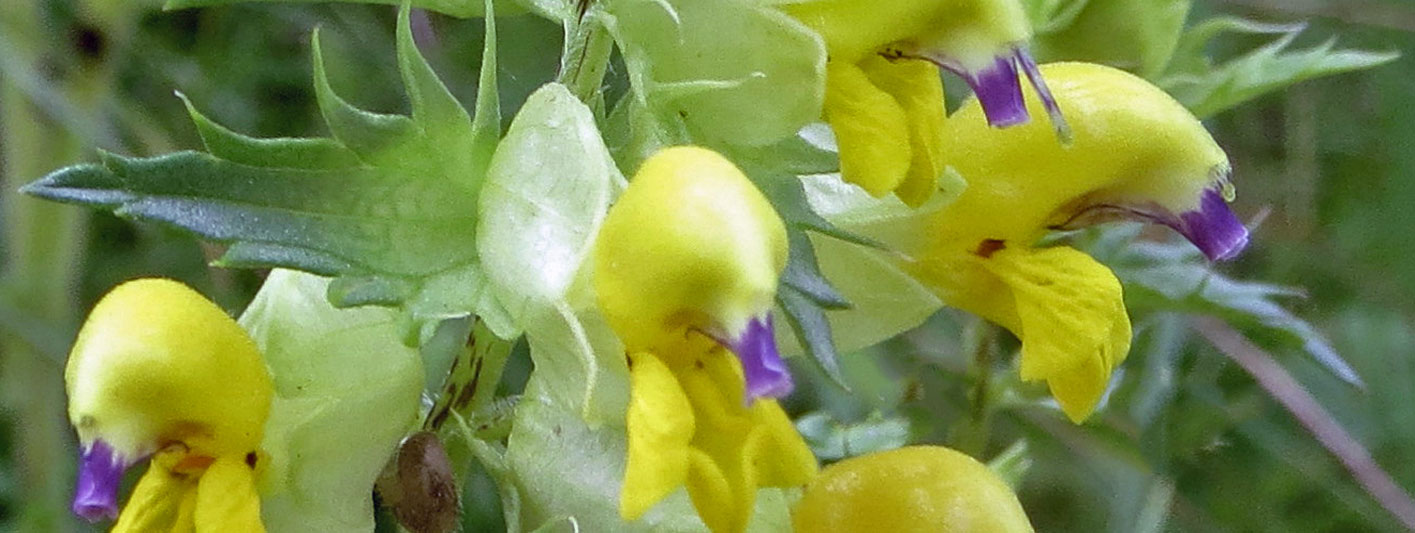Hy use yellow rattle in wildflower seed mixtures

Yellow rattle Rhinanthus minor is an attractive, semi parasitic plant that fixes itself to the roots of the competing grasses and draws nutrients from them. It then weakens and suppresses their growth, reducing competition, enabling the wildflowers to thrive amongst the competing grasses. It was once considered a weed in farmland, as it weakened grasses and could reduce the yield as much as 50%.
In a wildflower meadow, it is extremely beneficial, as the suppression of grass produces a better display of wildflowers, due to the reduction in competition. Yellow rattle takes it name from the colour of the flowers and the seed pods, which actually rattle when they dry and ripen. The yellow flowers are pollinated by bees, then followed by the seed pods, which dry out and ripen.
How to establish yellow rattle
Establishing yellow rattle can be a little unpredictable and results can be indifferent from year to year. It may take 2 or 3 years to build up an acceptable percentage of yellow rattle.
Ideally the seed should be sown into into the existing grass, or it should be mixed with the new seed being sown, if sowing on to a prepared seedbed. If sowing into existing grass, it is important to mow the grass short (removing the clippings) and if possible scarify, to expose the soil. This will help the seed come into contact with the soil.
A rake, scarifier or harrow will open up the surface and leave the soil exposed. Aim to expose at least 50% of the soil on a grassy area, this will give the seed a better chance of germinating. Once the soil is exposed, don’t delay sowing the seed, get it on while the soil is exposed and friable. Avoid sowing yellow rattle into thick long grass, as it simply won’t work.
When sowing the seed, it can be mixed with sand to help bulk it up, as it is very difficult to sow seed at the very low rates required. For a more even application the seed can be broadcast in two 90 degree directions at half rate. Once it has been sown, firm it in with a roller or by walking on it, to press the seed into the soil. Irrigate if the soil is dry, but avoid saturating the soil.
Yellow rattle might not perform well in all types of grassland, it thrives better in soils with low to medium fertility. If the area is dominated by coarse grasses this may also decrease the chances of yellow rattle success, ideally there should be high percentage of fine grasses.
It is important to sow yellow rattle seed in the autumn (no later than December) as it requires prolonged cold weather to break dormancy and activate germination the following spring time. Seed sown later than this struggles to germinate.
If you’re creating a new wildflower meadow or area and are sowing on to a newly prepared bare area, simply mix the yellow rattle seed with the other seeds and apply in the autumn.
After care
Look out for the first seedlings in the springtime, this could be during March to late April, depending on the ground temperature and weather conditions. Don’t be disappointed if only a few plants appear in the first year of sowing, once they drop their seed, the numbers should increase the following year.
